
All categories
Featured selections
Trade Assurance
Buyer Central
Help Center
Get the app
Become a supplier

(6133 products available)


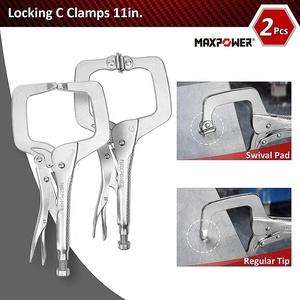
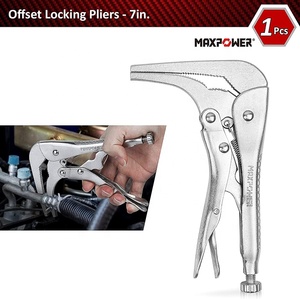







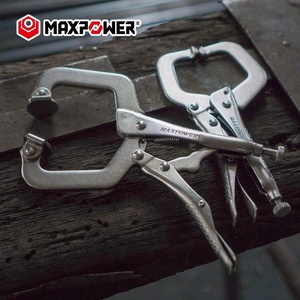









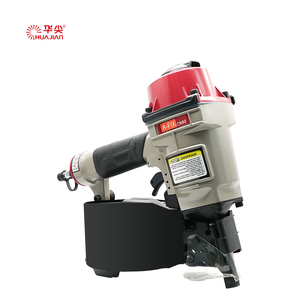


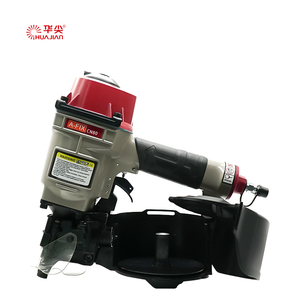



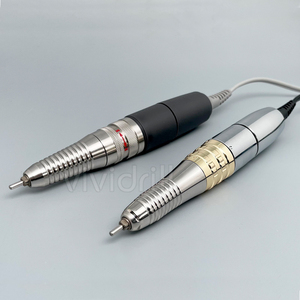
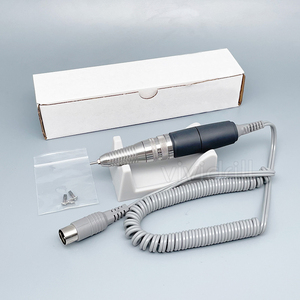


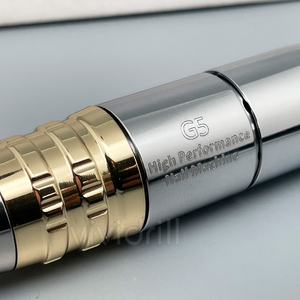



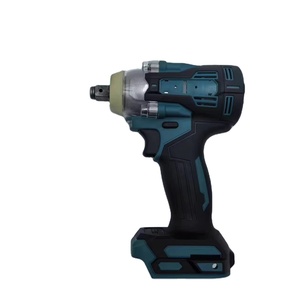



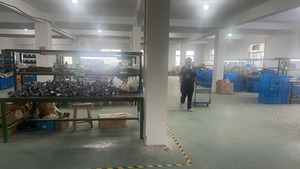
Power fastening tools can be classified into several categories. Here are the most common types when categorizing these tools.
The impact wrench is a power fastening tool. It offers high torque output to perform tough fastening tasks. It achieves this by combining rotational force with sudden jerks or impacts. This tool is ideal for heavy-duty applications like automotive repair, construction sites, and machinery maintenance.
This fastening tool is crucial for precision work. It ensures fasteners like bolts and nuts are tightened to specific torque settings. The electric and pneumatic torque wrenches outperform manual ones in speed and consistency. It makes them ideal for industries with strict torque requirements. These include the automotive and aerospace industries.
Power riveting tools have pneumatic and electric riveting tools. They provide fast and efficient rivet installation for heavy materials. These tools are primarily used in metal fabrication, construction, and aerospace manufacturing. The strength of the rivets combined with the efficiency of the riveting tools makes riveting the fastening method of choice for many businesses.
A power screw driver is similar to a cordless screw driver. It is an electric tool that drives screws into materials. Unlike a regular screw driver, it has an adjustable clutch. This helps control how deep the screw goes to give a good finish. Contractors in drywall installation and building houses prefer these tools. It is because they allow quick and consistent screw fastening in bulk.
The construction industry stands out as one of the primary users. This is especially true for the cordless power nailers. Construction workers need to perform a lot of fastening work, such as attaching beams, roofs, and walls. The tools offer speed and efficiency, especially on big projects with countless fasteners. Their effect on tightening items fast makes them a must-have for general contractors.
Automotive repair and manufacturing companies depend on these tools. They help easily and quickly install screws, bolts, and rivets. The impact wrenchs provide the strength needed to work with tough bolts and other auto components. Torque wrenches are equally critical in this industry. They ensure every bolt is tightened to the right specification to lower safety risks and reduce mechanical damage.
Fastening plays an important role in structural integrity as well as safety in the aerospace sector. Companies prefer riveting tools for metalwork since they create solid and long-lasting joints. These tools also minimize assembly time in this space where precision is key. They help meet the exacting requirements and strict regulations without compromising quality.
The manufacturing and maintenance industries use powered fastening tools to assemble products and maintain machinery. Pneumatic tools are key in these production lines. They provide the needed speed and ensure bolts and rivets are consistently fastened. Other tools like torque wrenches are frequently used during maintenance to ensure everything stays properly fastened as per the required specifications.
These power fastening tools are useful in the DIY and home improvement sectors. They help in different tasks, such as installing cabinets, fixing fences, and building furniture. A line of cordless electric fastening tools offers ease and flexibility. Home improvement enthusiasts can access these battery-operated tools that help them avoid cords and work in various areas with ease.
These fastening tools come with specific features that enhance their capability.
The torque level determines how much a tool can twist when tightening bolts and screws. Higher torque means more power, so the tool can handle tough jobs fast. Torque settings are important for controlling tightness during fastening. Different materials need different tightness levels to avoid damaging them. Adjustable tools let users pick specific torque levels for each task to give them better control.
Clutches control how much power goes from a tool's motor to its working end. Less control usually means less power but easier work for the tool. Clutchless tools are simpler because they do not have clutches. They also have power controls that help regulate their fastener pulling forces. They have easy-to-use features that make them efficient for many types of jobs.
Fastening jobs often need different bits to work with various fasteners. Changing bits takes time and can slow the pace of work. These tools come with simple quick-change systems. Some examples include magnetic holders or slide-in parts that allow fastener switches fast and easy. This helps workers switch between many fasteners fast without any delays. It improves productivity in tasks that demand constant changes.
Speed controls manage how fast a tool works at its job. Such features help vary work speed within many ranges depending on the task. Slower speeds are good for careful work, while fast speeds are good for quick jobs. What makes these controls useful is that many jobs need speeds adjusted to get better results without damaging anything. Users can set the exact speed needed for any task with easy controls to improve efficiency and give good results.
Understanding how to use these power riveting equipment properly will ensure they are used safely, effectively, and confidently.
Most power fastening tools have a switch that turns them on. Some tools also need batteries inserted into the tool or plugged into the power source. Tools that use cords need securing so they do not tangle as the user moves around. Many modern tools also have an LED screen indicating battery life and other important data. Power fastening tools usually have auto shuts that turn off after being idle for some time.
The main fastening jobs might require different attachments or bits. The user should ensure the right one is fixed for the task. Use the quick-release chuck or clip to change bits. Choose the right bit that matches the fastener size and type. This ensures efficiency and effectiveness during the task. After selecting the right bit, adjust the tool’s speed based on the material being worked on.
Fasteners usually come in different types. These include nails, screws, and rivets. All the user needs to do is load the fastener into the tool. Some tools need the fastener placed by hand, while others have automatic feeders. After placing the fastener, users should position the tool properly. When driving the fastener, the trigger should be gently pressed to ensure the fastener goes partially into the material.
The working area should be monitored to ensure all fasteners have been driven evenly and adequately. Once the fastener is driven, the trigger needs to be released. This is to avoid over-tightening or damaging the material. Users should also frequently check for any fasteners that need pulling out or were partially fastened. Over-tightening can cause damage and affect the tool's overall functioning.
Proper maintenance and repair of these tools is an inevitable process for the safety and efficiency of operations.
Users should routinely check their tools. Look for any signs of wear, damage, or loose parts. If a tool is dirty, users should clean it using a soft cloth. A brush should be used to remove any debris or dust. Air compressors or vacuums should not be used since they can damage internal components. For corded tools, inspect cords for frays or exposure. Damaged cords should be replaced before using the tools.
Tools like pneumatic riveters need lubrication regularly. Read the manufacturer’s guidelines to know the right lubricant. Usually, a small amount of oil needs to be applied to moving parts. The oil should not be applied directly where it could interfere with work. For electric tools, check and replace worn parts periodically. This includes carbon brushes or batteries. Worn parts should be replaced immediately to help prevent further damage.
Proper storage is useful for tool longevity. Tools should be kept in dry areas where there is no extreme heat or cold. Corded tools need care during storage to prevent cord tangles or damage. Battery-powered tools should have charged batteries stored safely away from kids. Keep pneumatic tool hoses neatly coiled to prevent kinks. Cases or pouches are effective in protecting tools from dust and damage.
Small repairs like replacing worn parts, brushes, or batteries can sometimes be done in-house. Always refer to the manufacturer's guide for the right way to replace parts. Complex repairs should be left to certified service centers. Using unlicensed repair services might reduce the warranty and lower performance.
These tools significantly affect job efficiency, safety, and quality.
Manufacturers usually make these tools using various materials. The quality of materials directly impacts the tool's strength, durability, and performance under stress. For instance, hardened steel or aluminum alloy components are tougher and wear-resistant.
Tools are manufactured with powerful motors and efficient work mechanisms. High-quality work mechanisms are usually effective at fastener application. They also generate less heat and noise during operation. This helps avoid fatigue to the user.
Pay close attention to the components that make up the tool. This includes clutches and gear systems. Those designed with premium quality parts offer better torque control and speed variations. These factors help reduce slippage and ensure precise fastening.
Every tool's quality level depends on how rigorously it was tested for reliability and safety. Quality tools are subjected to stress tests under extreme conditions. They also pass performance tests in real-world scenarios to check their effectiveness. Often, these tools feature quality seals and certifications. This includes ISO approval, which shows they meet industry standards.
Safety is paramount when using any tools. Below are some tips on how to stay safe when using these tools.
Inspect the tool before each use. Check for any cracks, loose parts, or damaged handles. Make sure any guards or safety features are securely in place. Ensure that battery-operated tools have fully charged batteries and worn batteries removed. For corded tools, check cords for wear or exposure. Never use a tool with defects that might endanger the user or those around them.
Always use the tool as intended, referring to the user manual for operating instructions. Follow the guidelines on how to adjust settings or change bits. Familiarize with safety features like triggers or automatic shut-offs before use. Using tools incorrectly is dangerous and might damage the equipment.
Devices like goggles, gloves, and ear protection should be used at all times to avoid injuries. Goggles protect the eyes from flying debris, while cushioned gloves provide better grips and avoid tool slippage. Gloves also guard the hands against cuts and vibrations. Most of these tools produce loud noises that could affect hearing. Using earmuffs can minimizer the likelihood of hearing damage. Keeping these tools out of the reach of kids is also key.
Firmly grip the tool with both hands to maintain control as one goes about their job. Electric tools should never be used in wet conditions since they pose the risk of electrocution. Corded tools should also be secured to avoid tangles when moving around. When using pneumatic tools, always check the air pressure. Never exceed manufacturer guidelines as doing so can cause part failure, which can lead to accidents.
A1: Start by determining the main fastening needs. Ask themselves if they usually drive screws, bolts, or rivets. Check if extra power or torque was needed for specific tasks. Next, consider other features that could improve work. These include speed control and easy bit changes. Lastly, think about battery life and weight. For cordless tools, good battery life ensures extended work without interruptions. A light tool offers effortless handling and decreases fatigue during long-duration jobs.
A2: The majority of modern cordless tools use lithium-ion batteries. They are durable and charge without losing previous power. These batteries are light, offering better tool balance and easy handling for ergonomic tools. They recharge quickly, providing minimal downtime, and many have power management systems that prolong their lifespan. These features make lithium-ion batteries ideal for extended usages in multiple industries.
A3: Excessive use without breaks, heavy loads, and dirty components frequently cause these tools to overheat. Poor ventilation also contributes to overheating. Users should take pauses to allow the tool to cool down during long usage. Always check if the workload is suitable for the tool's power rating. Overworking a tool can generate excess heat. Allowing the tool to cool down after intensive use also goes a long way in preventing overheating. Regularly clean tools will prevent debris clogs that hinder ventilation.
A4: Users must pay close attention to any signs of decreased performance. They should check for unusual sounds, vibrations, or slippage. Visible smoke or overheating can also indicate internal damage. A decrease in the tool’s power output, like struggling to complete simple jobs, also points to worn parts. Users should do routine inspections. Look for any signs of wear on belts, gears, or brushes. Using worn parts decreases the tool's effectiveness. It also increases the likelihood of accidents.
A5: Maintenance practices like routine cleaning and lubrication prolong the lifespan of these tools. Always clean the tool after each use to remove debris and dust. A soft brush or cloth can be used for this purpose. Do not use harsh chemicals either. They damage the tools' components. These tools require regular lubrication to ensure smooth operation. Only use the kind of lube suggested by manufacturers. Repairs should be left to professionals to avoid further damage.